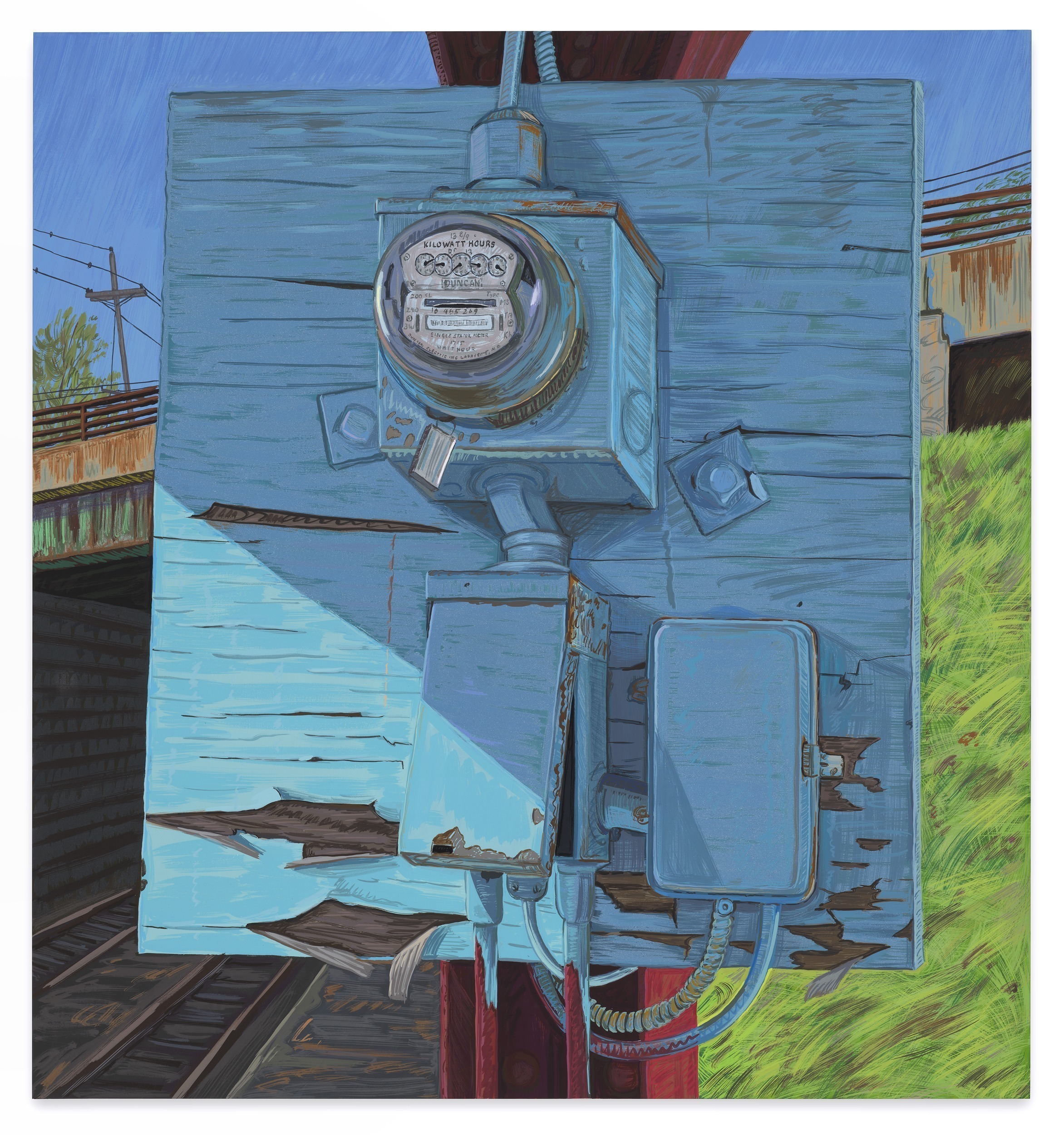
Josephine Halvorson, Station Meter, 2022, Acrylic gouache on panel, 31 × 29 inches (78.7 × 73.7 cm). Institute of Contemporary Art, Boston. Gift of David and Stephanie Simon © Josephine Halvorson. Photo by Julia Featheringill.
Josephine Halvorson’s painting practice focuses on place and the careful acts of observation and transcription. Working outdoors, Halvorson selects a particular site, sets up her tools and materials, and takes in her surroundings, translating what she sees into painted marks. The resulting paintings capture the heterogeneity and brilliance of the mundane, revealing each square inch of earth to hold countless colors, shapes, and textures.
Station Meter is from a body of paintings (many of which were made during the COVID-19 pandemic), centered on artistic genres of still life and memento mori, which “hover between liveliness and decay,” according to the artist. Halvorson settles on many of her subjects—often overlooked scenes that appear to hold little value otherwise—during her walks and travels, drawn primarily to seemingly forgotten corners of different environments. It is Halvorson’s deep investment in her subjects through which she locates the latent meaning of each scene. She spends hours looking closely and working in a vérité style in order “to make a painting that remembers better than I can,” says Halvorson.
Station Meter centers on a watt hour meter, a device that measures and records the electric power flowing through a circuit over time. The meter is mounted on a weathered piece of wood whose brilliant blue paint is peeling, its appearance neglected. The mounted meter is represented frontally and crowds the canvas against a backdrop of train tracks, an overpass, and electrical lines, conveyed through an economy of means in very little space. As in many of Halvorson’s works, the meter is painted with a poetic exactitude that renders it with a quiet dignity. It appears to suggest that despite being overlooked, the work nevertheless must go on. The passing and measuring of time apparent in the scene are analogous to Halvorson’s investment in moments of beauty that often go unnoticed.